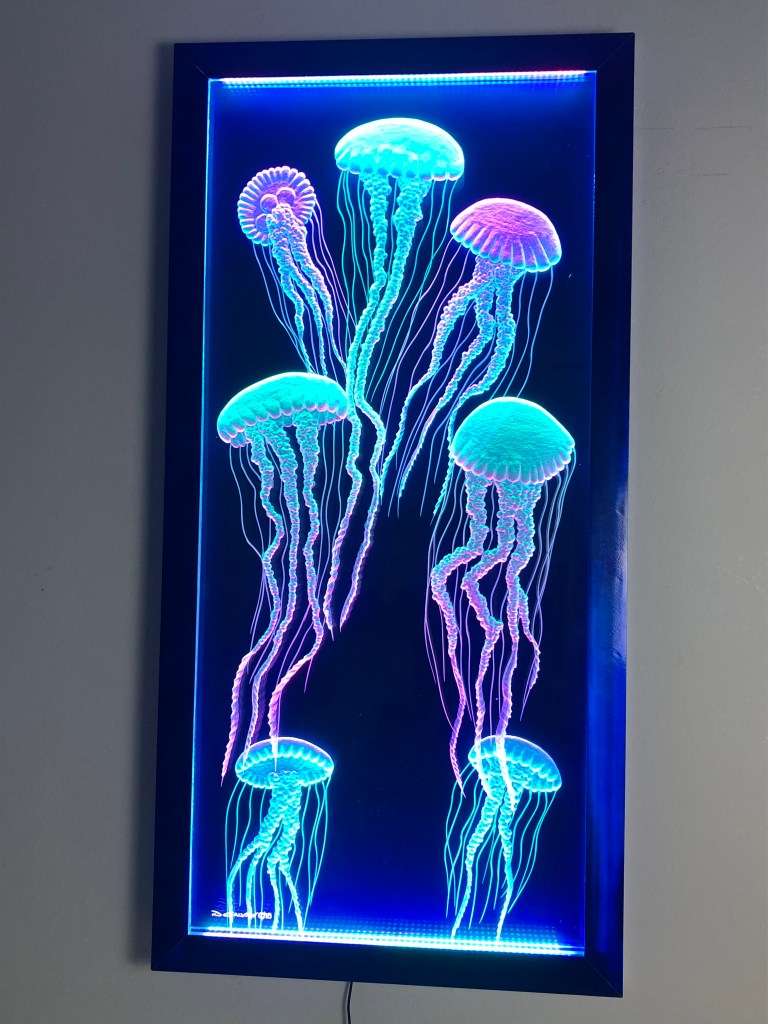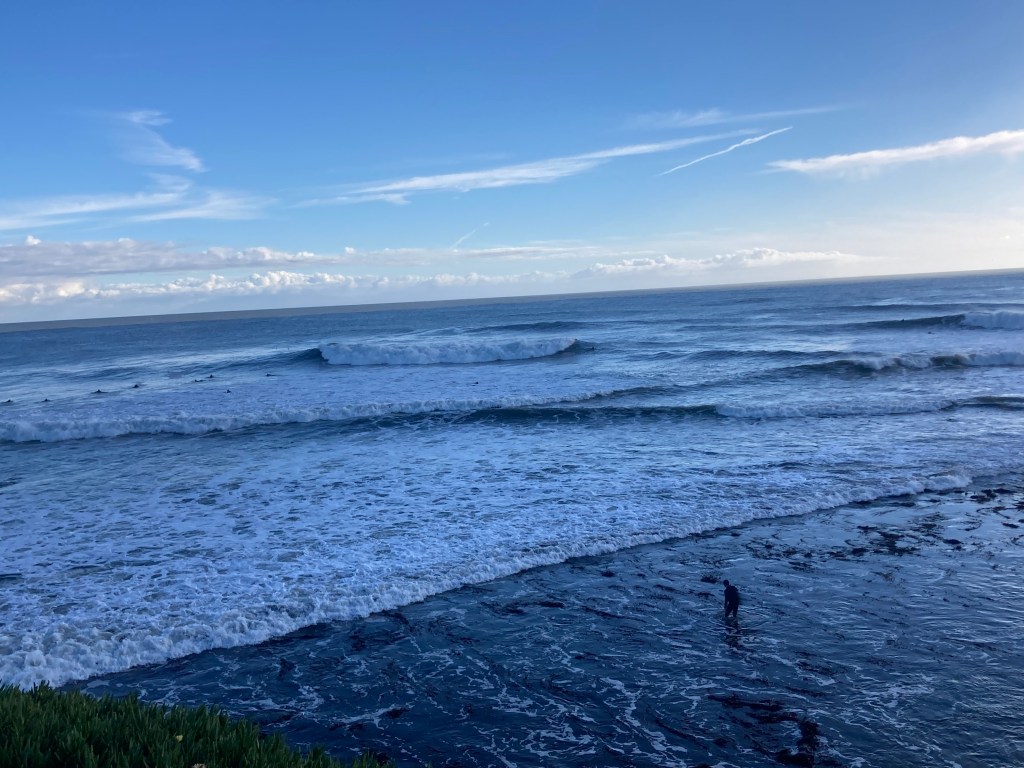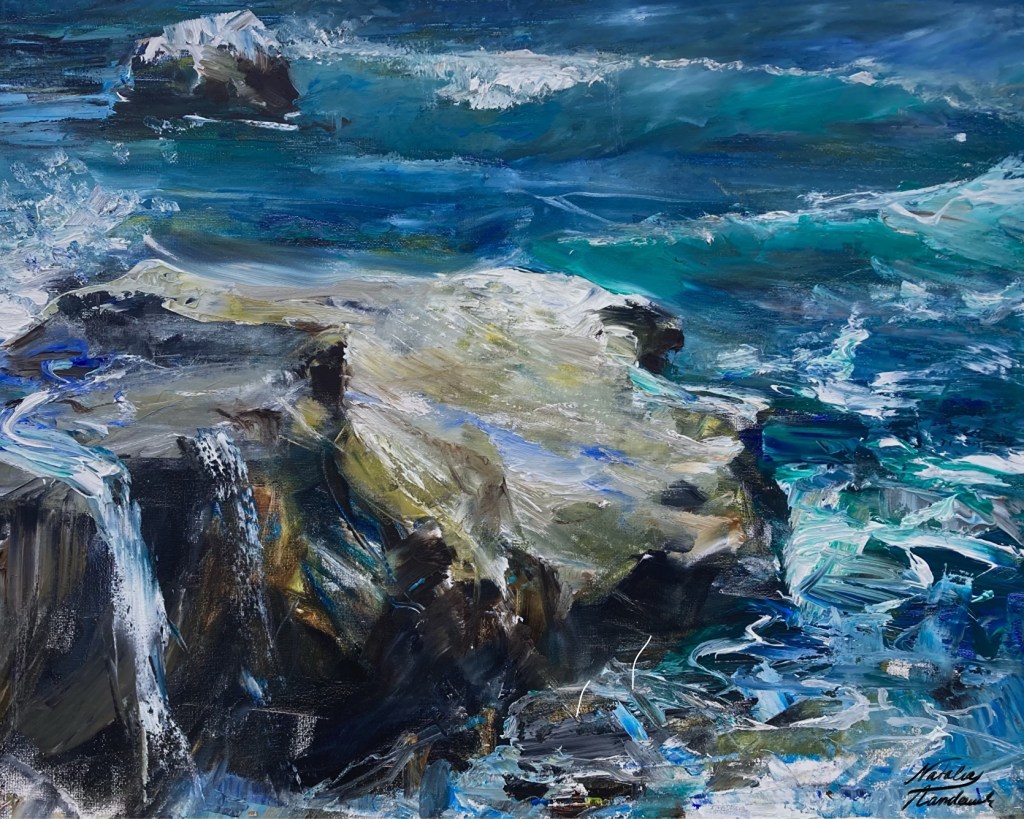
What Tony Taught Us
The young men on the boat rushed by Napoleon wrasse, lionfish,
and other marvels—so much life they missed where you glided at sixty feet
in their hurry to get to one hundred feet, though less life can be seen
that deep. But they wanted to photograph themselves there.
Your dive buddy was an older man who lingered over rocks browsing,
gazed into crevices, poked his head under ledges and went slowly.
Now we go slowly too.
Bringing magnifying glasses, we examine scales on coral trout,
contemplate a dart fish’s translucent eyes, peer inside corals’ mouths,
studying their miniscule movements, explore the color glowing inside
a nudibranch’s skin, its wavering gill, and its cerata’s spunky fringe.
We move along leisurely, mesmerized by appearances and activities.
The point of diving is to observe, to look deeply, to let go into being
a stranger, and to absorb a world not your own, to immerse yourself
in amazement, soak in its presence, let yourself become one with it.
To notice, to see, and to see again.
Anna Citrino, from Buoyant

Beneath the ocean’s surface is a world of wild beauty. It’s a place worth moving through slowly because moving with slowness allows one to see more. A central focus of diving is simply to experience the sea’s environment and what presents itself there. Something amazing might appear, or it might not, but the diver is on the lookout for what might surprise or awe. What looks like a stone might be a fish if you look carefully. Tiny seahorses might be hiding on a piece of coral. Observing coral feeding is fascinating. As the poem above describes, “The point of diving is to observe, to look deeply.” When we take time to look closely, allow ourselves to sink into a quiet space of being with what we observe, we can often notice details we otherwise wouldn’t. Simone Weil wrote, “Attention, taken to its highest degree, is the same thing as prayer. It presupposes faith and love. Absolutely unmixed attention is prayer.” If unmixed attention is prayer, then diving is a kind of prayer. A diver’s entire body is attentive to the world the diver is immersed in. To dive is to purposefully let go into an unfamiliar world that functions in an entirely different way. Simply witnessing the variety of life in the sea is astonishing.

Artists, too, are keen observers whose work requires focus. A skilled artist brings the world alive for us in a new way, allows us to see it more fully. New Mexico artist Joseph Galvan has been carving lucite for several decades, and a number of his pieces include under water scenes illuminated from below, such as these fabulous jelly fish. Something I especially love about this work in lucite is how the subjects seem to float in clear water. Galvan’s jelly fish carvings are full of interesting texture, their forms alive with a sense of fluid movement. Looking at the carving feels something akin to watching actual jellyfish.

People’s creative efforts enrich our lives. They bring meaning, and help us to be more fully aware of the world around us and how others are experiencing it. We need more beauty in the world, are hungry for it. Like other artists, Joseph Galvan brings beauty to our lives. To do creative work over long periods of years is challenging and demanding. It takes a great deal of fortitude, resolve and prolonged focus to bring one’s imaginative vision to fruition. The earth, too, is in an ongoing creative process. Think of the millions of years it has taken for the natural world to evolve into places like Yosemite, Uluru, and the Great Barrier Reef! When we see natural beauty or we look at great art, it changes us because such observation reaches directly into the heart and touch us with life.
Gregory Wolf, in his essay “The Wound of Beauty,” on Image, Art, Faith, and Mystery site states, “Beauty also has the capacity to help us to value the good, especially the goodness of the most ordinary things. The greatest epics, the most terrible tragedies, all have one goal: to bring us back to the ordinary and help us to love and to cherish it….That is the magic of art. It may spread a huge canvas, it may be bold and baroque, but its essence is to remind us of the everyday and to transmute it into a sacrament.” Scuba diving isn’t the only experience that helps reconnect one to the wonder of being alive. I hope you find the practices or experiences that bring beauty into your life and that help you recognize the preciousness of even the seemingly simple things of life such as water in all its wonder. As Wolf suggests, the ordinary experiences of life are beautiful when we have eyes to see them.



This coming June 9, at 5:00 pm Pacific Time I will be reading from Buoyant my book of poems about diving. If you would like to participate in the Zoom meeting, send me a message and I will send you the link.
You can order Buoyant from Bellowing Ark Press here.













